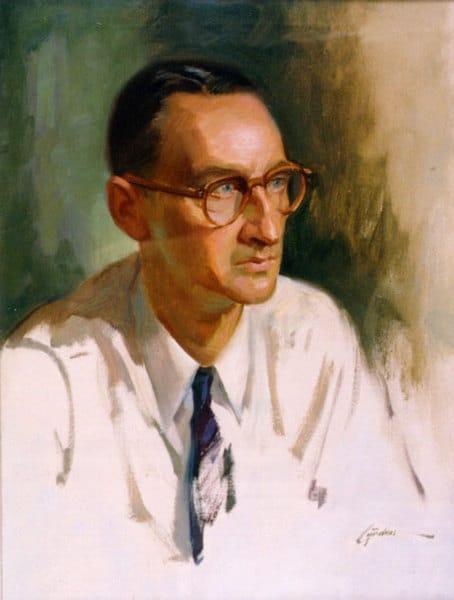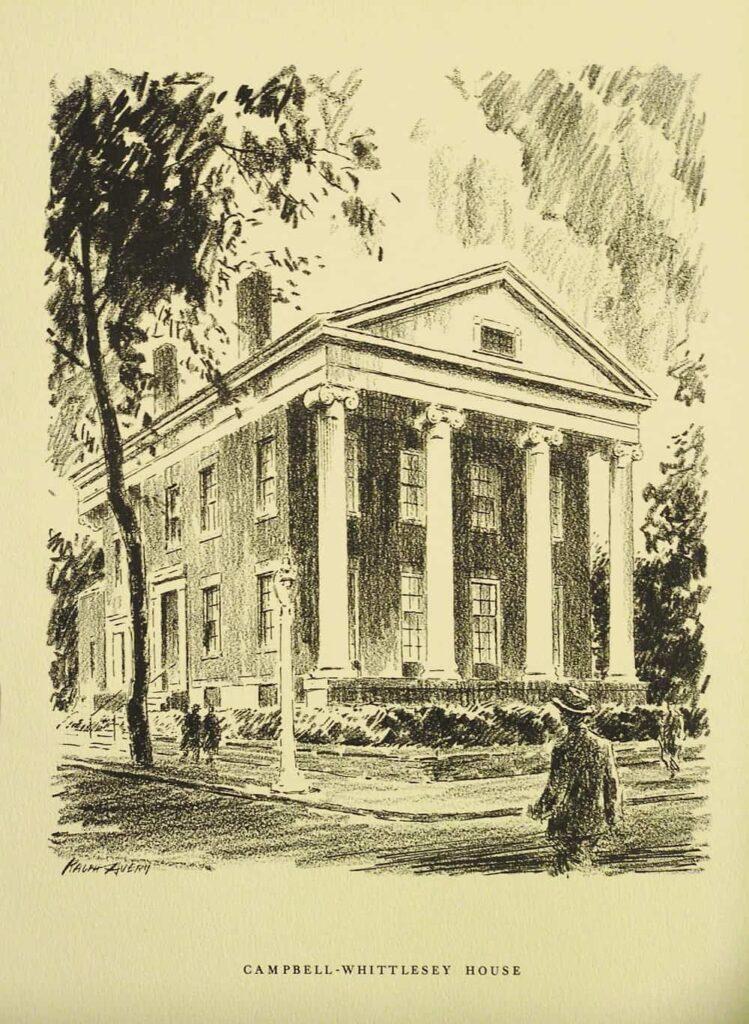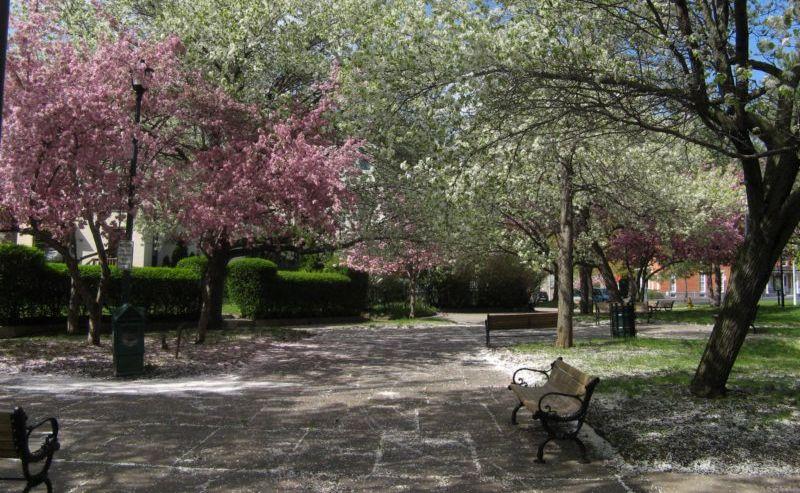In the spring of 1980, a small pocket park was created in Corn Hill, named in honor of Ralph Hillyer Avery. Many of us have enjoyed this beautiful park at Avery Mall with its benches, flowering trees, flower pots, and inspirational sayings etched in its stones. Yet how many of us know anything about the artist for whom this park was named?
Ralph H. Avery was born in Savannah, Georgia in 1907, and came to Rochester to study art at the old Mechanics Institute (now RIT) Bevier Building in the early 1920’s. He graduated in 1928 and earned a scholarship to be a fellow at the Louis Comfort Tiffany Foundation, where he studied for two years from 1930-1931.
His love of abstractions of nature, the architecture of old buildings, and the beauty he found in city scenes of Rochester’s gray, foggy weather were well suited to the watercolor medium in which he excelled. He also became a well-known illustrator, working for several commercial enterprises, including General Motors, the Saturday Evening Post, and Reader’s Digest, for whom he created many magazine covers.

He did much as an artist to eliminate the line between commercial and fine art. He served as a faculty member in RIT’s Department of Applied Art for 25 years, leaving there in 1953 to devote his energy to studio work.
Avery lived in the Corn Hill neighborhood for many years in the historic Hervey Ely house where he had his studio. He also had a studio at 60 North Fitzhugh Street. He never strayed far from the neighborhood he loved with its elegant homes, history, and stunning architecture.
Ralph Avery held one-man exhibitions at the Smithsonian Institute, was a member of the National Academy of Design and the American Watercolor Society, and received many awards during his lifetime, including the Grumbacher Purchase Prize and the very prestigious Lillian Fairchild Award from the University of Rochester.

In 1954, Avery’s work “Plymouth Avenue Rain,” chosen by the American Watercolor Society, was displayed in America’s Top 40 Works of Art.
One of his most well-known works of art is “Statue of Mercury” atop Kimball’s Tobacco Factory in the location where Blue Cross Arena currently stands. This painting was commissioned by the Case-Hoyt Corporation for its 1950 calendar. Although Kimball’s factory no longer exists, the statue still sits atop the Aqueduct building in downtown Rochester.
Ralph Avery died on January 28, 1976 and his funeral was held in St. Luke’s Episcopal Church on South Plymouth Avenue, a structure which he loved and once painted. Avery was described as a quiet, generous, private man, who shared so much of his life through his painting.
After his death Ralph Avery’s estate donated over 450 pieces of his art collection to the Memorial Art Gallery, many of which may be viewed here: https://magart.rochester.edu/artist-maker/info/13

